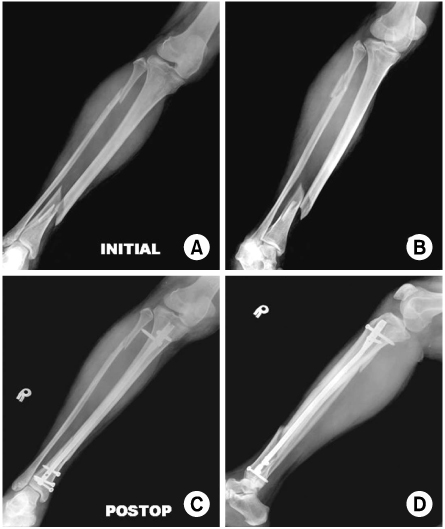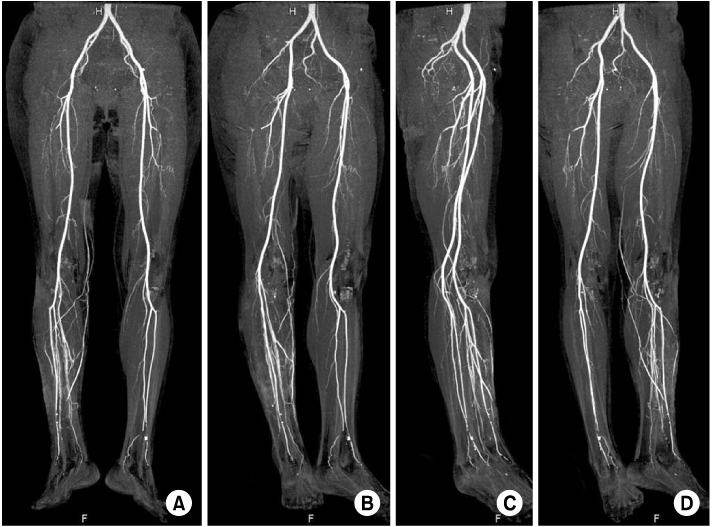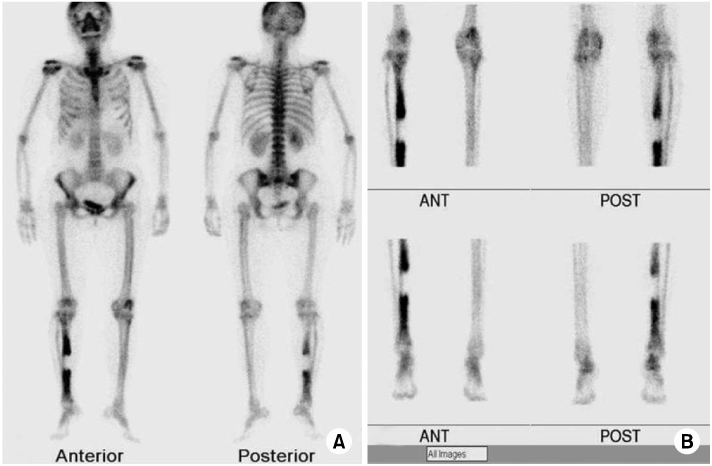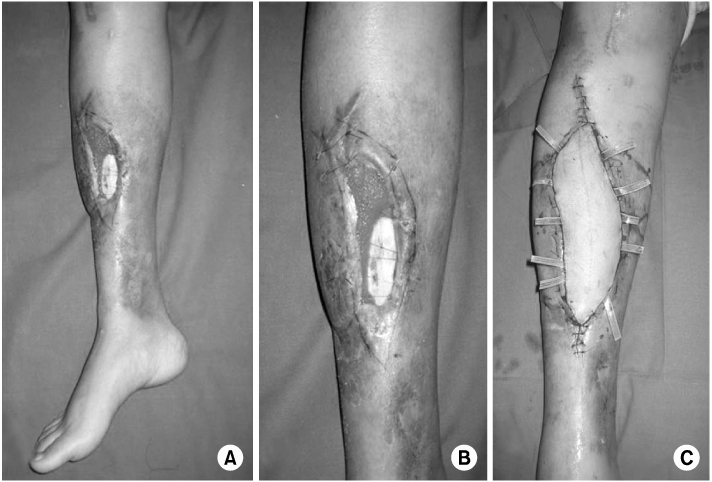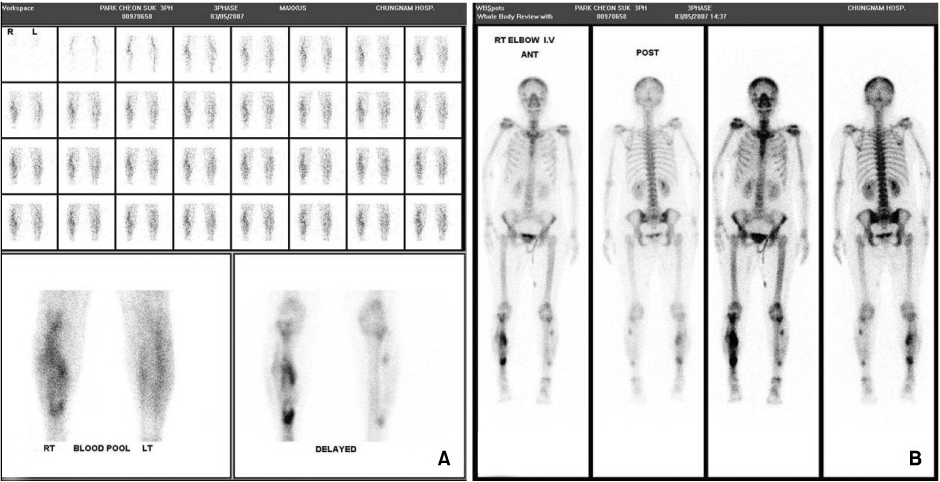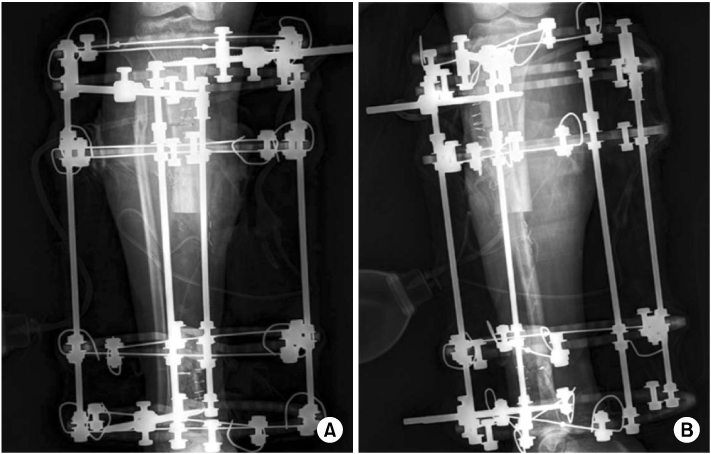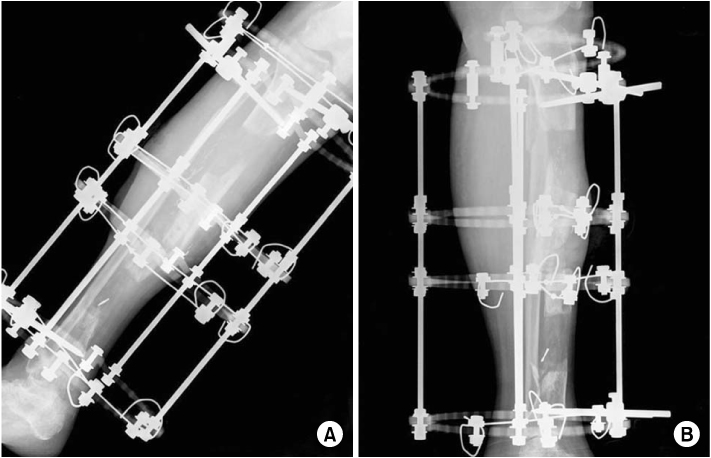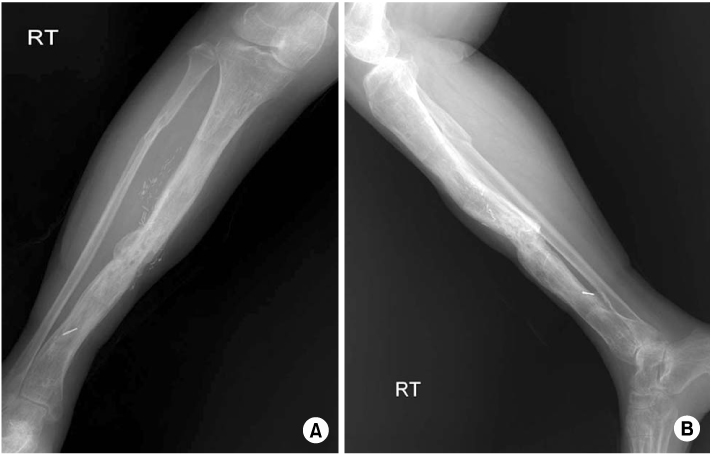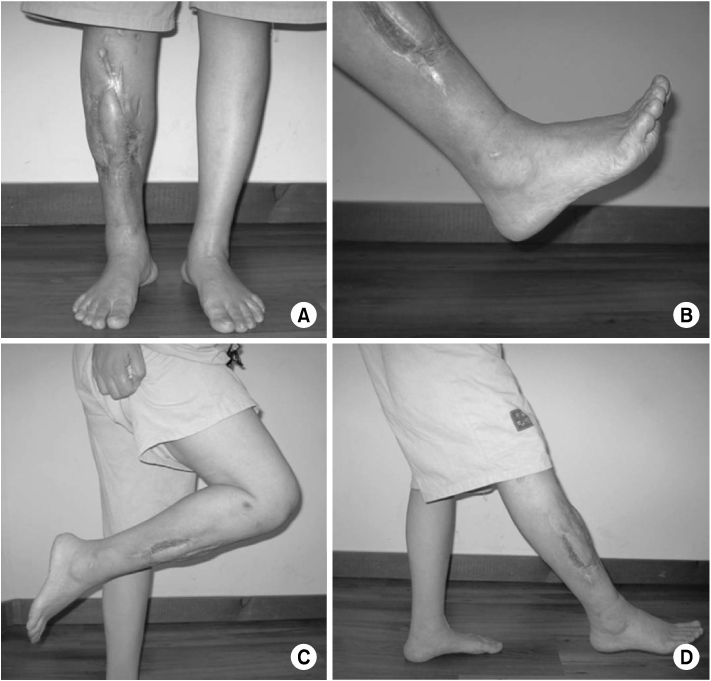J Korean Fract Soc.
2011 Apr;24(2):178-184. 10.12671/jkfs.2011.24.2.178.
Thermal Injury Complicating Improperly Reamed Intramedullary Nailing of the Tibia: A Case Report
- Affiliations
-
- 1Department of Orthopaedic Surgery, Dong-A University Medical Center, Busan, Korea.
- 2Department of Orthopaedic Surgery, Chungnam National University Hospital, Daejeon, Korea. hyunsd@cnu.ac.kr
- KMID: 2183862
- DOI: http://doi.org/10.12671/jkfs.2011.24.2.178
Abstract
- Endosteum and bone marrow thermal necrosis caused by reaming during tibial intramedullary nail insertion, and unskilled operation of soft tissue penestration by reamer resulted in chronic osteomyelitis and soft tissue defect. So, several times of free flaps were done but the result was unsuccessful. At last, the authors performed radical necrotic bone resection and internal bone transport using Ilizarov external fixator. The authors report case with literature review.
Keyword
MeSH Terms
Figure
Reference
-
1. Court-Brown CM. Reamed intramedullary tibial nailing: an overview and analysis of 1106 cases. J Orthop Trauma. 2004. 18:96–101.2. García OG, Mombiela FL, De La Fuente CJ, Aránguez MG, Escribano DV, Martín JV. The influence of the size and condition of the reamers on bone temperature during intramedullary reaming. J Bone Joint Surg Am. 2004. 86-A:994–999.
Article3. Giannoudis PV, Snowden S, Matthews SJ, Smye SW, Smith RM. Friction burns within the tibia during reaming. Are they affected by the use of a tourniquet? J Bone Joint Surg Br. 2002. 84:492–496.4. Kocaoglu M, Eralp L, Rashid HU, Sen C, Bilsel K. Reconstruction of segmental bone defects due to chronic osteomyelitis with use of an external fixator and an intramedullary nail. J Bone Joint Surg Am. 2006. 88:2137–2145.
Article5. Leunig M, Hertel R. Thermal necrosis after tibial reaming for intramedullary nail fixation. A report of three cases. J Bone Joint Surg Br. 1996. 78:584–587.6. Riemer BL, Foglesong ME, Burke CJ 3rd, Butterfield SL. Complications of Seidel intramedullary nailing of narrow diameter humeral diaphyseal fractures. Orthopedics. 1994. 17:19–29.
Article7. Schmidt AH, Finkemeier CG, Tornetta P 3rd. Treatment of closed tibial fractures. Instr Course Lect. 2003. 52:607–622.
Article8. Yazar S, Lin CH, Wei FC. One-stage reconstruction of composite bone and soft-tissue defects in traumatic lower extremities. Plast Reconstr Surg. 2004. 114:1457–1466.
Article
- Full Text Links
- Actions
-
Cited
- CITED
-
- Close
- Share
- Similar articles
-
- Reamed versus Unreamed Intramedullary Nailing after External Fixator Application in the Treatment of Open Tibial-Shaft Fracture
- The Clinical Results of Unreamed Interlocking Intramedullary Nailing for Tibial Fractures
- Comparison of Reamed and Unlearned type Intramedullary Interlocking Nail in Treatment of Tibia Shaft Fracture
- Interlocking Intramedullary Nailing in the Treatment of the Tibial Shaft Fractures: Comparative Study between Reamed and Unreamed Nailing
- A Comparison of Reamed and Unreamed Interlocking Intramedullary Nailing for Closed Fractures of the Tibia Shaft

